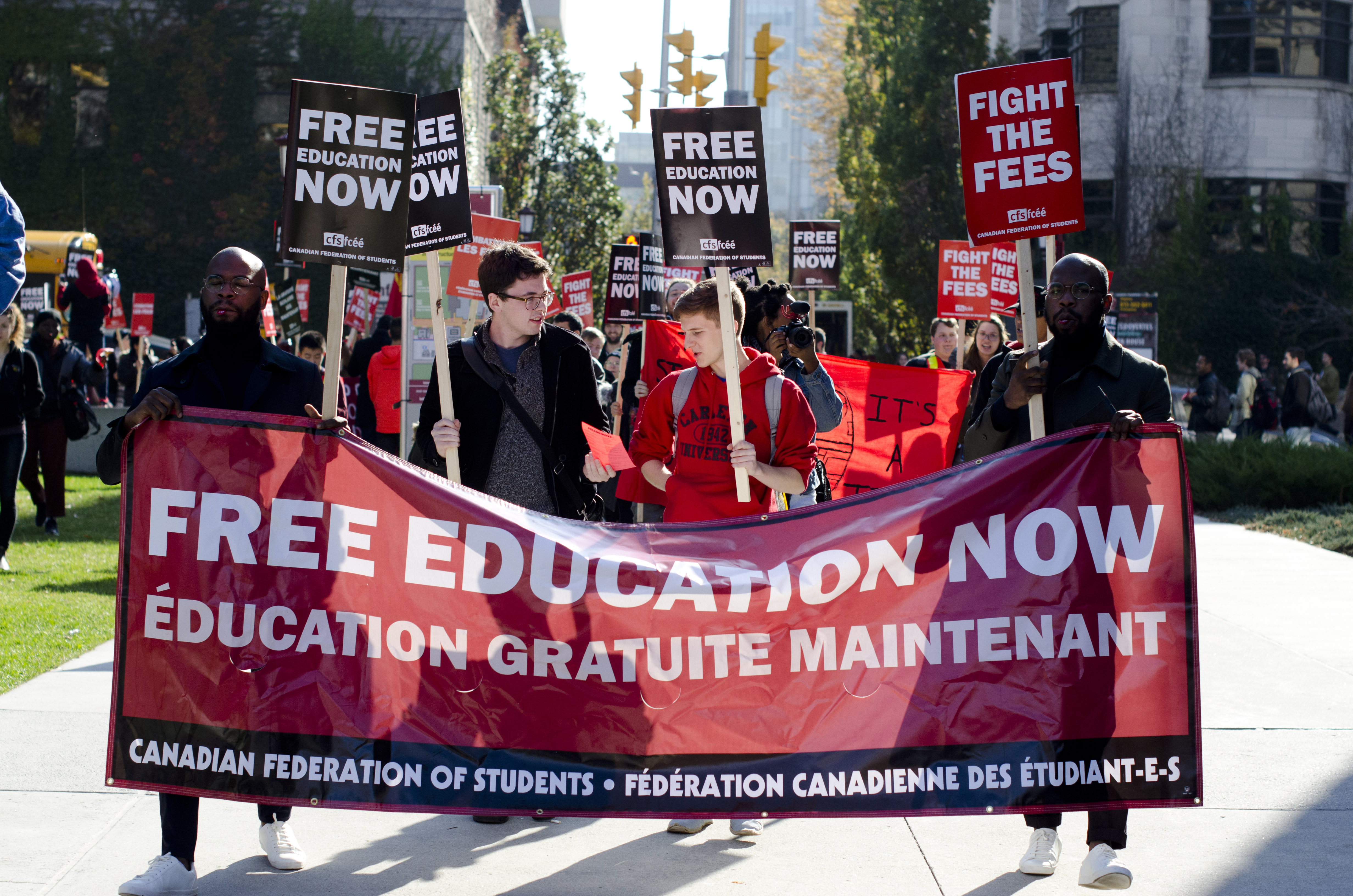Nov. 2 marked a national “Day of Action” organized by the Canadian Federation of Students (CFS). The objective of the event was to draw attention to a “crisis in post-secondary education” across Canada, according to the CFS website.
This was the first Canada-wide Day of Action in four years—in 2012, students across Canada organized marches and co-ordinated on social media to bring awareness to high tuition fees, student debt, and lack of public funding.
This year the CFS launched the “Fight the Fees” campaign, arguing high tuition fees have a discriminatory impact on students from middle and low-income households, and barriers are made worse for students from marginalized communities.
The CFS is calling for an elimination of tuition fees, turning student loans into non-repayable grants, and removing interest on student loans.
“The objective of the Day of Action is to showcase a united stance from students across the country for free education,” said Bilan Arte, national chairperson of the CFS.
Students from many universities across Canada planned rallies to support the Day of Action.
Carleton University, St. Paul’s University, and the University of Ottawa all organized protests on their campuses for the Day of Action that ended at Parliament Hill.
“Having a demonstration on the front lawn of the federal government is showcasing that people in our nation’s capital are taking a stand and putting political pressure on the government to make education free,” Arte said.
Canadian full-time students in undergraduate programs paid 3.2 per cent more in tuition fees on average in 2015-16 than they did the previous year, according to Statistics Canada.

Deb Matthews, Minister of Advanced Education and Skills Development for Ontario, said she has met with the CFS on student issues and agrees that “money should never be a barrier to post-secondary education.”
However, she said she disagrees with the CFS’s objective to give all students access to free tuition.
The Ontario government is providing low and middle-income families access to free tuition starting in 2017, according to Matthews.
“In effect what [the CFS] are saying is they are lobbying for free education for higher income families. . . I don’t think the next priority should be to further subsidize education for higher income students,” she said. “I think students should contribute unless there’s a reason why they can’t. I think families should contribute unless they don’t have the income for that.”
Rajean Hoilett, chairperson of CFS-Ontario, said the CFS has been gathering support from students and community organizations in preparation for this year’s Canada-wide protest.
“This Day of Action is really an opportunity to mobilize this support that we’ve seen across the board, and turn attention towards all levels of government,” Hoilett said.
Arte said various levels of government are beginning to have serious discussions about access to post-secondary education, “because of the pressure students and campaigns have been putting on them,” she said.
A free tuition model for post-secondary education would work with a more progressive tax system and strong public funding, according to the CFS website.
Free post-secondary education is a reality in several countries such as Germany, Norway, and Sweden.
“The government right now in Ontario is looking at everything from tuition fees to student loans. . . it is really important for us to hit the streets, to be visible, and to really make our voices heard as students,” Hoilett said.






